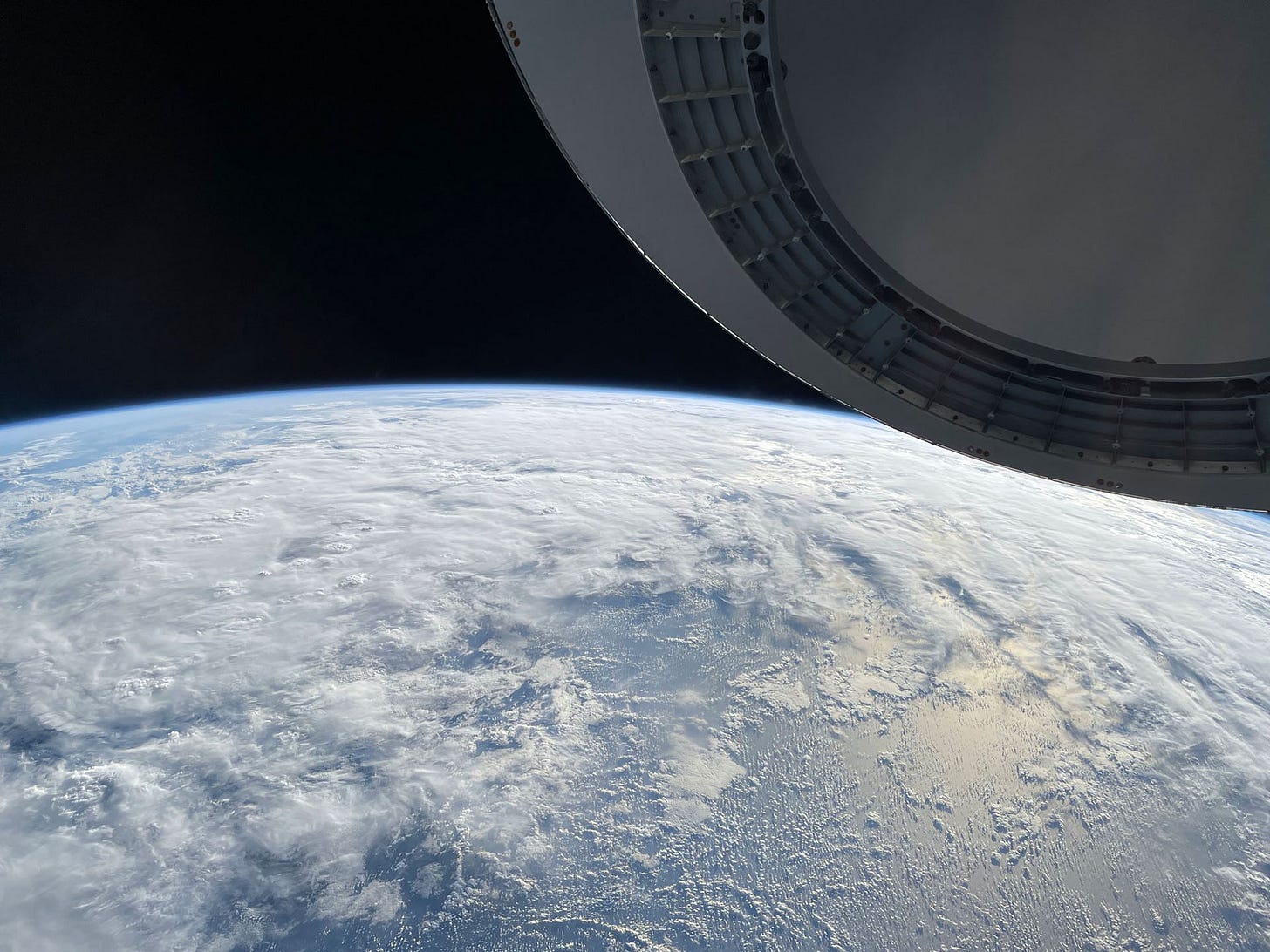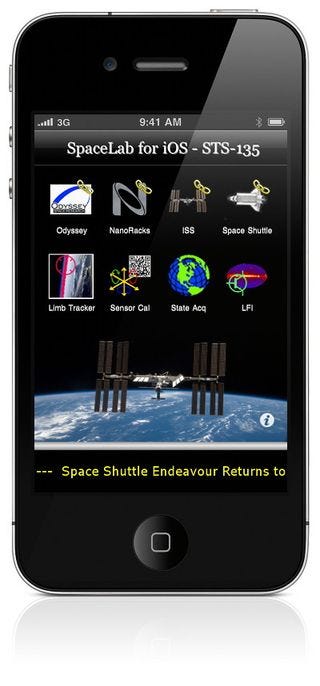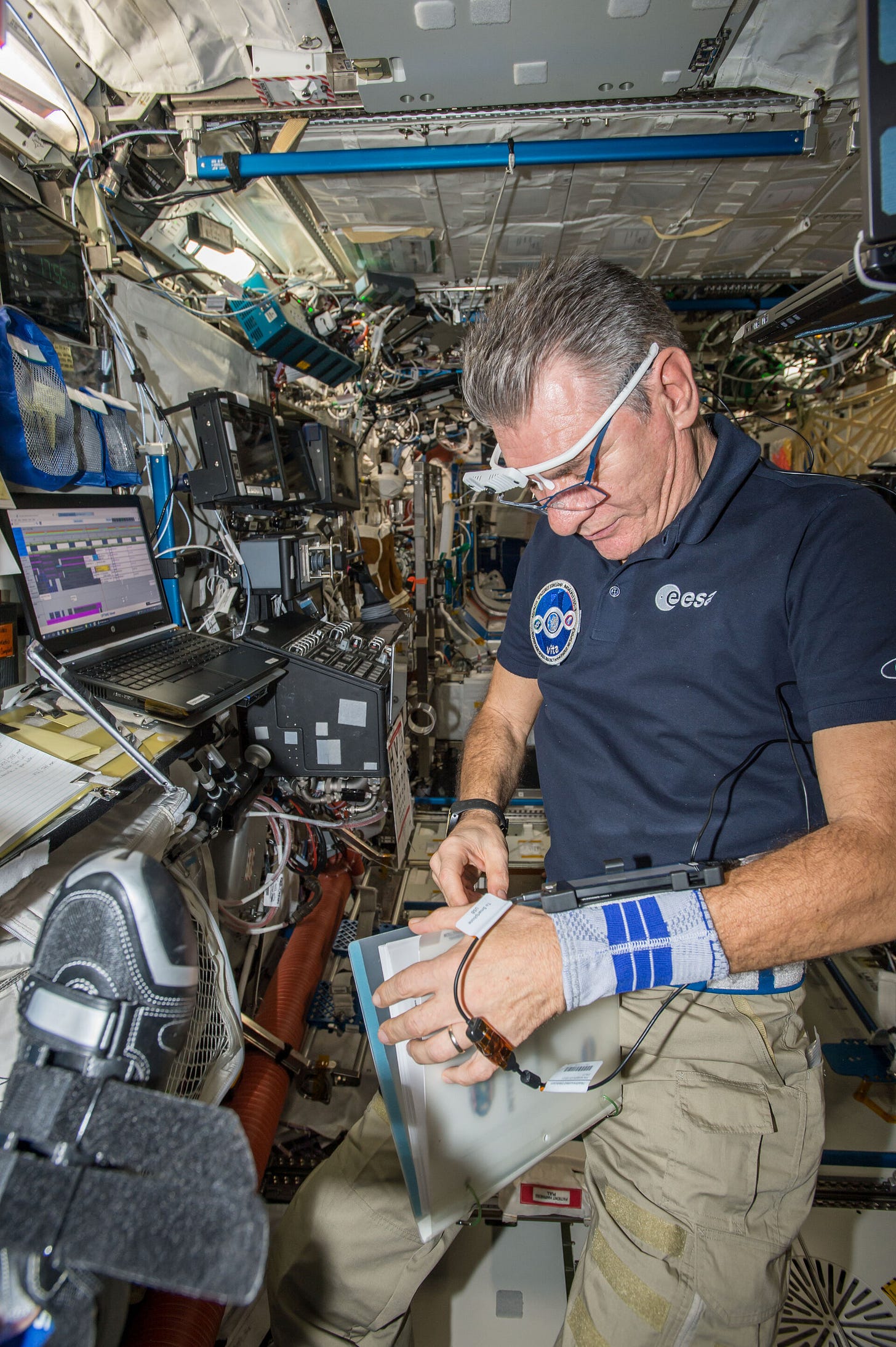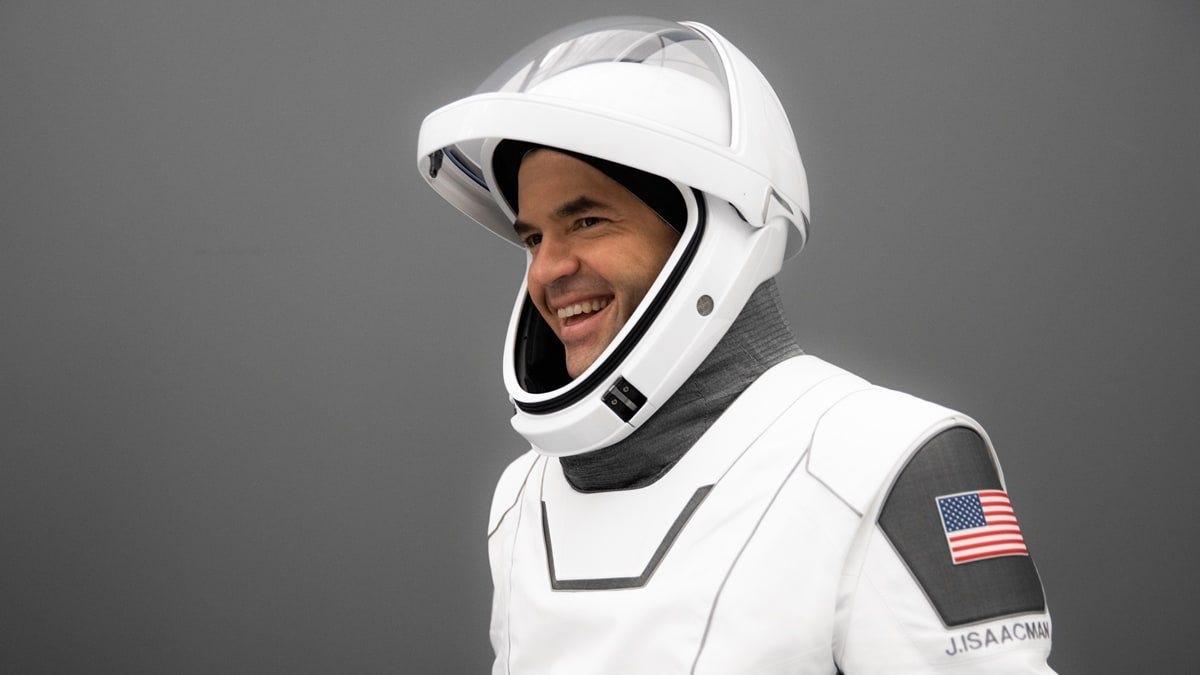Do Astronauts Use Smartphones In Space?
Spoiler alert: yes. But now in the way you would expect them to use. Featuring iPhones and Androids. And even Inspiration4 Commander Jared Isaacman spoke to me.
Hey everyone!
Today, I brought you a fascinating topic.
We’ll explore whether astronauts use smartphones in space. And if so, how.
What’s even more exciting is that Jared Isaacman, the commander of Inspiration4 mission also spoke to The Multipassionaut.
So let’s go!
In September 2021, the first all-civilian spaceflight, the Inspiration4 was launched.
The crew spent 3 days in low Earth orbit onboard SpaceX’s Crew Dragon spacecraft.
Even Netflix made a great documentary about their mission. It covered the crew selection, the training, and the spaceflight.
You should watch it.
But being the first all-civilian spaceflight mission is not the only fascinating thing about Inspiration4.
They also used iPhones, Apple Watches, and iPads extensively during the flight.
Not only to take awesome photos, like this one:
But they also used those Apple devices to conduct medical research.
According to reports before the mission, the crew’s Apple Watch Series 6 devices were used to collect “research-grade ECG activity, movement, sleep, heart rate and rhythm, blood oxygen saturation, [and] cabin noise”.
They also used a mobile ultrasound scanner called Butterfly IQ+. It could connect to iOS devices to perform scans.
This is all pretty impressive, isn’t it?!
I have an Apple Watch Series 6.
I use it to track my guilt workouts after binging a pizza. It shows me how bad my sleep is when I drink bottles of wine on a Saturday night. It also tells me if the environment is loud when I’m driving and playing music at 100% volume.
I am awed that such a device can be used in microgravity for scientific purposes.
But then, some questions come to my mind:
Okay, it was one all-civilian mission. But do astronauts actually use smart devices in space?
Were those devices in “airplane mode” the whole time? Did they have any chance for connectivity?
How did the devices’ motion sensors react to microgravity?
And more.
So, in this week’s piece, I want to explore if smartphones in space are a thing. If so, I'll look at how those devices behave in a very different environment than they were made for.
iPhone(s) And Other Smart Devices On The International Space Station
It was 10 years before the Inspiration4 mission when the first iPhone was sent to space.
On STS-135, the last Space Shuttle mission flown by Atlantis, two iPhone 4 devices were sent to the International Space Station (ISS).
These iPhones were aimed to support the research onboard the station. A Houston-based research firm, called Odyssey Space Research developed an app called SpaceLab for iOS to help astronauts perform experiments.
Both iPhone 4 devices were certified by NASA for spaceflight. They spent months supporting the ISS crew before returning to Earth on a Soyuz mission.
The STS-135 mission also carried a Samsung Nexus S to the ISS. Samsung claimed that the Nexus S was the first smartphone cleared for spaceflight. But I doubt that was true.
And not only because I'm an Apple fanboy…
Anyways.
I have not found any official information on whether any other iPhone devices have been used on the ISS since then.
But, in an ISS video from the visit of the Ax-1 private mission, we saw Cosmonaut Oleg Artemyev taking photos with an iPhone. It was either an iPhone 12 Pro or 13 Pro.
It is unknown if the device belonged to the Ax-1 crew or the permanent ISS crew.
The usage of iPhones on the space station is still a blank area. However, astronauts do use various tablets - mainly iPads - and Android smartphones for their daily work.
For example, the European Space Agency (ESA) developed an astronaut aid system called mobiPV. It is a mobile app on an Android smartphone. It helps the astronauts do experiments and other work on the ISS.
As you can see in this video, astronauts wear Android devices on their wrists so they can easily access and track the procedures they have to follow during experiments or installations.
Astronauts also use iPads on the ISS and not only for serious work. As this ESA article mentions, in 2018, German astronaut Alexander Gerst used an iPad to perform a duet with the electronic band Kraftwerk.
So if you thought that astronauts would carry their iPhones to the ISS to FaceTime their families or post Instagram stories from 400 km above Earth, I have to break the sad news.
It doesn’t work like that.
Astronauts still mainly use laptops to get internet access and perform personal communications - calling their families, sending emails, or even tweeting.
When it comes to research, they have other, maybe more complex, devices.
But the crew of Inspiration4 seems to have worked quite well with the Apple devices to perform their experiments.
The Experience With Smart Devices on Inspiration4
I got in touch with Jared Isaacman, who led the Inspiration4 mission as commander.
He is also the founder of the first private human spaceflight program, the Polaris program.
His four-person crew is currently in training for the Polaris program’s first mission, named Polaris Dawn. The mission is expected to take place in Summer 2024 onboard a SpaceX Crew Dragon spacecraft, going higher in orbit than anyone in the 21st century yet.
I wanted to learn more about their experience with those Apple devices in microgravity.
As Jared recalled, they did not experience too many difficulties with the iPhone or Apple Watch sensors in microgravity.
In a recent tweet, Hayley Arceneaux - who also flew on Inspiration4 and became the youngest American and first cancer survivor in space - mentioned that she experienced some issues with auto-rotation while taking photos.
Of course, this is not a big surprise. The iPhone's accelerometer is not designed or calibrated for microgravity.
I was also curious to know whether they tracked how the Apple Watch measures movement in microgravity. But, Jared wasn’t sure if they exported that data.
As he confirmed, they mainly used the Apple Watch to get ECG and blood oxygen data. The iPhone mainly was a screen for the Butterfly IQ+ ultrasound device.
Regarding the data collection from the Apple Watch, Jared mentioned that measuring the blood oxygen wasn’t so easy. They had to perform several attempts before it worked correctly.
Asking about their upcoming mission, the Polaris Dawn, Jared confirmed that the crew will use both Apple and Garmin devices during their spaceflight.
He did not say what devices they will take onboard the Crew Dragon spacecraft. But, we can rightly assume that iPhones, iPads, Apple Watches, and Garmin smartwatches will be among them.
One of the many key differences between the Inspiration4 and Polaris Dawn missions will be the connectivity.
The Inspiration4 crew had no internet access at all. Although, Elon Musk later said that future missions will have "a food warmer and free wifi".
And yes, Polaris Dawn will test Starlink’s laser-based communications so probably onboard WiFi as well.
What Is The Future Of Smart Devices In Space?
Great question.
The future will tell.
One thing is for sure, smart devices will accompany astronauts in future missions.
Humankind will return to the Moon. Smart devices will surely help the lunar pioneers.
During Artemis I, an uncrewed test mission around the Moon, NASA sent an iPad onboard the Orion spacecraft. They sent it to test an Amazon Alexa.
Basically, the iPad had a Webex by Cisco video conferencing software installed on it. The app transmitted video and audio from the Houston-based Johnson Space Center to communicate with Alexa.
Sounds pretty cool.
Of course, in future missions, the solution they call Callisto will use NASA’s Deep Space Network and the spacecraft’s local database to talk to Alexa. This is due to the potential communication challenges between the spacecraft and the Earth-based mission center.
But this is just one example.
With upcoming private missions like Polaris Dawn, or the first private crewed lunar flyby mission, dearMoon, we can expect more iPhones and other smart devices used to capture the beauty of space, Moon and of course, our Planet Earth.
One thing I am mostly excited about: an Apple commercial, featuring photos & video taken in space.
Shot on iPhone. In Space.
Thanks for reading this piece.
I hope it was fascinating to read. Believe me, I was so excited to write about it.
If you wanna read more weekly pieces like this, please subscribe.
Also, please share with others so more people can learn weekly about People, Earth, and Outer Space.
See you next week!
Máté - The Multipassionaut








